In 1980, screenwriter Victor Miller and director Sean S. Cunningham launched Friday the 13th, a low-budget summer horror that unexpectedly became a phenomenon. The twist ending – killer Pamela Voorhees avenging her drowned son – catapulted the idea of Jason Voorhees into the franchise’s DNA. Miller himself recalls that in his original screenplay “Jason was not really a character. He was dead. The mother was the villain…”. Indeed, the boy in the lake was meant only to motivate Pamela; Jason’s first appearance is brief, nightmarish, and tragic. Yet Jason’s name (a fusion of Miller’s sons Josh and Ian) and the circumstances of his childhood accident planted a seed for much more. Miller noted that he never envisioned Jason as the killer or an ongoing “monster”– a fate handed off to sequels by others.
Despite its modest budget, Friday the 13th grossed millions and embedded Camp Crystal Lake into horror lore. Jason Voorhees himself appears only in flashback and as a deformed corpse (played by Ari Lehman, with Tom Savini’s grotesque makeup). His deformed, bandaged face hints at trauma. In the final moments, Jason inexplicably rises as Alice Hardy escapes – a chilling, unresolved glimpse that outran Miller’s original plan. Audiences responded to the film’s raw suspense and inventive kills (Pamela’s axe swing is iconic), and Friday the 13th quickly became a textbook slasher. Though critics panned it, the movie’s financial success and cult buzz laid the groundwork for Jason’s evolution.
Jason’s Resurrection: Friday the 13th Part 2 (1981)
-
Portrayal: In the sequel, Jason Voorhees steps out of the shadows as the killer. We see him as a hulking, mute young man, stalking camp counselors in the woods. Gone is the fragile child; now he’s a nearly wordless avenger, bent on vengeance for his mother’s death. His first look is under a burlap sack with a single eye-hole – a crude, terrifying mask that obscures his features.
-
Design & Appearance: Jason’s look is grimy and feral. He wears shabby clothes scavenged in the woods and a burlap sack over his head. His body language and ragged attire convey that he’s lived in isolation. It’s only at the finale that we briefly glimpse Jason’s scarred face (under a hunting hat and the torn sack) – a horrific visage, full of grief and rage.
-
Behavior & Weaponry: This Jason is dangerous but still human. He moves with a predatory crawl and wields a kitchen machete for most kills – the weapon that becomes his trademark. He is swift and silent, straining after trespassers and exacting brutal, unhesitating revenge. At one point he spares protagonist Ginny Field, recognizing her sacrifice of Pamela’s sweater; Jason’s only emotional connection is with his dead mother. The killings (strangling, stabbing, impaling) emphasize ferocity rather than supernatural strength.
-
Writers/Directors’ Intentions: Steve Miner took over directing, and Ron Kurz wrote the script. Producer Sean Cunningham and Paramount realized the marketing gold in Jason as the villain. Miller long joked he would have “fought” making Jason the killer if he’d stayed on, but the producers embraced the change. Essentially, the studio wanted more gore and a steady slasher formula, so Jason replaced his mother as the series’ boogeyman.
-
Mythos/Backstory: Part 2 fleshes out Jason’s survival. Five years after the drownings, Jason is alive and living as a feral hermit on Crystal Lake. He’s got a shrine to Pamela (with her severed head and mementos) in a hideout. This installment confirms Jason was not dead – he simply evaded help – and has grown twisted by grief. Ginny’s final confrontation in Mrs. Voorhees’ sweater briefly fools him into thinking she’s his mother, underscoring Jason’s enduring attachment.
-
Reception: Fans enthusiastically accepted Jason as the new killer. Part 2 was a solid box-office hit, spawning a boom in slasher sequels. Critics remained dismissive, but horror audiences cheered the increased body count and suspense. Notably, modern reviewers point out that Jason here is almost sympathetic – a wronged soul gone murderous. As one analysis observes, “Jason’s first full outing… portrays [him] as a human being, arguably sympathetic in a certain light given the tragic conditions of his upbringing… He displays a legitimate emotional connection to his beloved mother’. This sense of humanity sets Part 2 apart in the series and gave depth to a character otherwise doomed to become a monster.
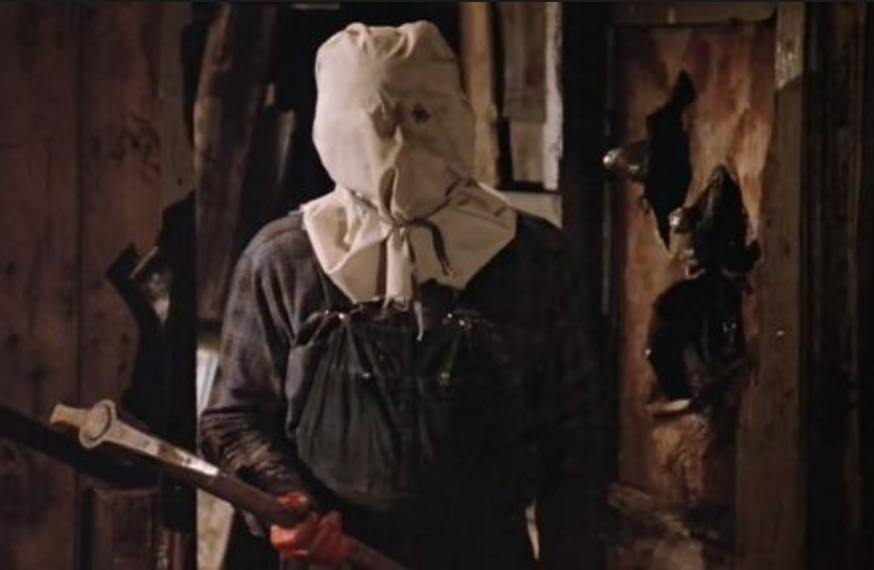
The Masked Menace: Friday the 13th Part III (1982)
-
Portrayal: Jason’s raw brutality continues unabated. In Part III, set at a lakeside lodge, he terrorizes another group of counselors. This film notably debuts Jason’s full hockey mask – the face shield that will become his signature. Jason himself feels almost incidental early on: director Howard Avedis had an original ending where Jason simply never appears, but late in production Kane Hodder (stuntman turned actor) was cast for key scenes. By the finale, Jason is very much the killer, stalking and picking off teens.
-
Design & Appearance: The introduction of the hockey mask is iconic. According to effects artists, the mask was a last-minute substitute (no one wanted hours in prosthetics), but it “unconsciously” birthed Jason’s most famous look. After killing prankster Shelly and stealing his mask, Jason adopts it for the rest of the film. The mask’s blank white expanse hides his face completely, replacing the burlap’s ragged tension with something impersonal and haunting. Jason’s costume is otherwise similar – worn jeans and a torn jacket – but the mask alone turns him into a mythic figure.
-
Behavior & Weaponry: With the mask on, Jason becomes the unstoppable brute fans came to fear. He uses a hand drill in one gruesome kill and stabs, impales, and crushes his victims in savage ways. Jason still has no dialogue, but he’s decisively monstrous now, shedding any lingering sympathy. The mask makes him more emotionless and mysterious – he simply is the killer.
-
Writers/Directors’ Intentions: Part III was made in rushed 3D back-to-back with Part II. Producer Frank Mancuso Jr. wanted bigger scares and an even more iconic image. The hockey mask was not planned as “the” mask but fell into place serendipitously. The director wanted Jason to feel like a force of nature, which the blank mask helped achieve.
-
Mythos/Backstory: No new backstory is revealed; Jason’s mystery only grows. However, the mask itself becomes a mythos-building device – it obscures Jason’s face so completely that it makes his presence almost spectral. Fans have often linked it to hockey (Shelly’s mask) and played with symbolism, but officially it’s just an adopted disguise.
-
Reception: Audiences adored the new mask. Part III was a big summer hit, proving Jason’s pull. Although critics were unimpressed, fans now had the definitive Jason look that would drive pop culture. The mask cover became a horror emblem everywhere. In hindsight, Part III is credited with turning Jason into a true icon, thanks to that simple piece of sports equipment.
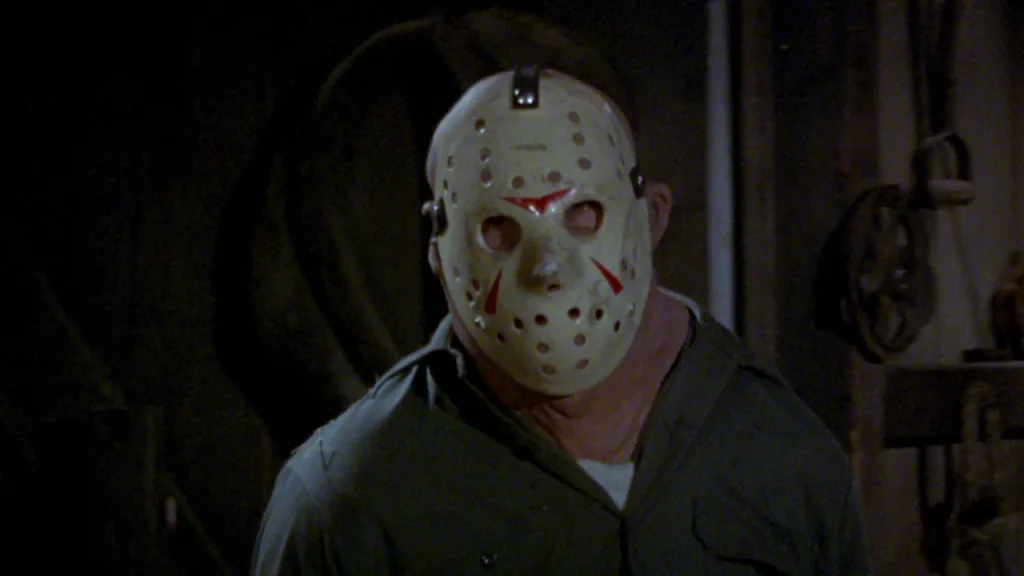
The Final Chapter: Friday the 13th Part IV (1984)
-
Portrayal: Billed as the “final” Jason, this film finds him resurrected after being impaled in Part III. He’s more aggressive and relentless than ever, laying waste to a new camp near Crystal Lake. Kane Hodder plays Jason here as an unstoppable juggernaut; there’s even a bit of humor as he strolls down stairs behind an oblivious counselor. But largely Jason is unhinged and furious.
-
Design & Appearance: Jason retains the hockey mask (now cracked by Chris Higgins’ axe) and bulky, athletic physique. Makeup artist Tom Savini added grotesque detail under the mask: Jason’s skin is mottled and partially peeled from his skull after the creek drenching. This is also the first time audiences hear his trademark high-pitched “CAW!” before a kill. He’s a hulking, wrestling-type monster, clad in a dark jacket that highlights his imposing size.
-
Behavior & Weaponry: The Final Chapter ups the gore and creativity of kills. Jason uses a drill to fashion a hideout-bound maze of traps; he’s almost gleeful in construction. His machete slashes through flesh, and he even uses knitting needles and sticks to stab. Director Joseph Zito leaned into cartoonish gore at times: Jason sticks a needle through someone’s neck like knitting. The fourth film also introduces Tommy Jarvis (Corey Feldman), a smart but violent boy who ultimately dispatches Jason with a machete.
-
Writers/Directors’ Intentions: This was meant to be the last Jason movie, so the creative team wanted a big finish. Joseph Zito and writer Barney Cohen gave Jason an almost superhuman portrayal: after he’s found “dead” in the morgue, he effortlessly kills medical staff and breaks free again. The tone is darker at the start (with a family slashed early on) but touches of camp humor appear via Tommy’s antics. Producers wanted a theatrical, gory finale that would satisfy fans.
-
Mythos/Backstory: This entry doesn’t add much to Jason’s past, but it does introduce his archenemy: the resourceful Tommy Jarvis, who becomes a recurring character. It cements that Tommy’s family was at the original camp, tying continuity to Jason’s origins. In a metatextual twist, Jason’s “final” end is basically chained underwater by Tommy (a nod to the *80s film trope).
-
Reception: The Final Chapter is often ranked among the series favorites. Fans enjoyed the mix of ultraviolence and character (Tommy is one of the franchise’s more memorable survivors). Critics still derided it as formulaic, but the film’s humor and effects earned it lasting affection. Thankfully, “final” didn’t stick – but it did help cement Jason’s image as unstoppable.
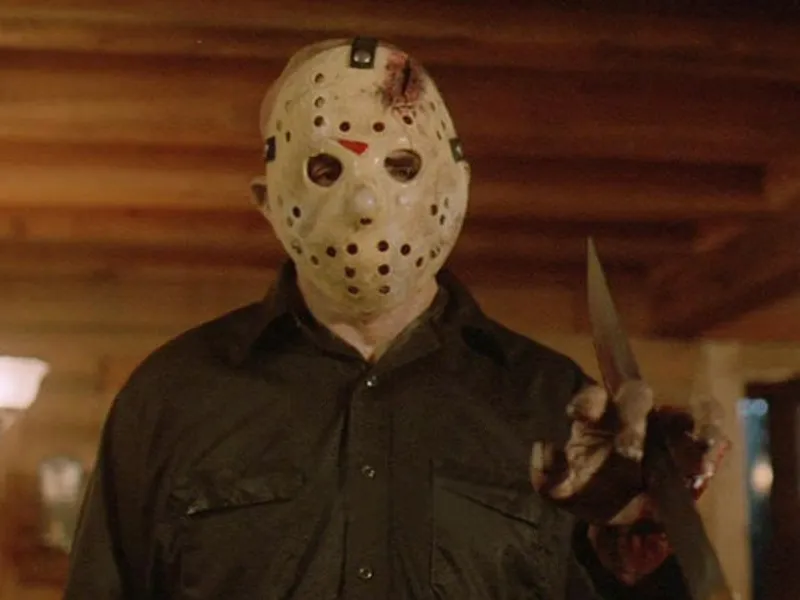
A New Beginning (Part V, 1985)
-
Portrayal: Surprisingly, this film is mostly not Jason-centric. Jason’s body supposedly lies cremated at the end of Part IV, and A New Beginning focuses on Tommy Jarvis in a halfway house, tormented by nightmares. The true killer is revealed to be Roy Burns, a delusional paramedic adopting Jason’s persona to mask his own psychosis. Jason appears only in hallucinations and dream sequences.
-
Design & Appearance: When Jason does appear, it’s brief and surreal – an unmasked, sweaty figure, haunting Tommy’s dreams, or briefly fleeing with Roy’s mask. Roy himself dons the hockey mask and wields Jason’s machete, mimicking the look for his killings. In one meta moment, a character shows up with a Jason Lives pin-on mask at a party, highlighting the franchise’s comic undertones.
-
Behavior & Weaponry: The film’s “Jason” behavior is really Roy’s: he kills supposedly to protect Jason’s legacy (he has lost his own son to crime). Roy uses the machete but also stabs with a syringe (professor syringe!). The chase scenes are still there, but whenever Tommy confronts “Jason”, it’s actually Roy. The real Jason does not slay the counselors.
-
Writers/Directors’ Intentions: Producers wanted to kill off the concept of Jason (so they wouldn’t have to keep making identical sequels). Director Danny Steinmann and writer Martin Kitrosser deliberately mislead audiences – even their poster and trailer look like a standard Jason outing, only to subvert it. Censor board demands (for this R-rated installment) also led to heavy editing of gore. The twist (Jason is dead) was meant to shock and spin the franchise into a new direction.
-
Mythos/Backstory: This movie effectively wipes Jason from the final two films of its continuity. It invents a bizarre “mythology” where Jason can only be killed by his bloodline (an idea used later in comics). We learn that Roy modeled himself on Jason after losing his own son. But nothing about Jason’s childhood is added.
-
Reception: Fans overwhelmingly despise this entry. It ranks lowest on most lists. Critics also hated the false advertising and silly twist. While it’s intriguing that the franchise took such a risk, most audiences felt cheated by the fake-out – “Jason” hardly appears. Part V’s failure ensured the series returned to the familiar formula soon after.
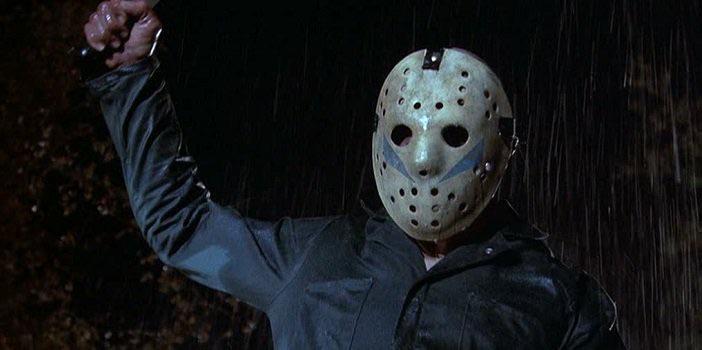
Resurrection Realized: Jason Lives (Part VI, 1986)
-
Portrayal: Jason Voorhees is truly back with a vengeance – and he’s undead. After inadvertently reviving Jason’s body with a lightning strike, hero Tommy Jarvis finds himself face-to-face with the zombie killer he swore he’d killed. Jason now shambles with superhuman strength and an unshakeable drive. This time, he cannot be killed: shotgun blasts, axes, even a propeller to the neck only slow him down.
-
Design & Appearance: The creature makeup is more elaborate than ever. Jason’s mask is broken and dirtied, and his flesh is pallid and ripped – Savini gave him widened jaw and top teeth showing, signaling rotting tissue. His eyes (from actor CJ Graham) burn with an eerie fire. A key visual novelty: in a humorous salute to Terminator, Jason later dons an all-black shirt (a future “Uber Jason” style) after stomping down the attic stairs behind a counselor.
-
Behavior & Weaponry: Jason Lives introduces Jason’s auto-attacking nature: he does not stop. He employs not just machetes but axes, hooks, and whatever is at hand. Director Tom McLoughlin deliberately leans into levity – he shows a trio of victims decapitated in one gag. Jason can no longer be reasoned with at all; once resurrected, he becomes an almost unstoppable machine. However, he remains animalistic, thrashing wildly when enraged.
-
Writers/Directors’ Intentions: Tom McLoughlin, a self-described horror fan, revived Jason after the disastrous Part V. He wanted a campy, comedic slasher entry – as he put it, Jason Lives “infused hearty laughs and a lighter tone upon the typically dead serious franchise”. This gave the movie a self-aware edge. McLoughlin also introduced new gore stunts (e.g. triple decapitation) and embraced Jason’s mythos fully (calling the film Jason Lives in the title). The tone shift was intentional: Jason could now casually grin (as implied by the open jaw) and even knock a zombie-killing sign on a wall.
-
Mythos/Backstory: Officially, none beyond the resurrection. Unofficially, a lot happened: novelizations and comics of Jason Lives expanded the lore (introducing, for example, Elias Voorhees, Jason’s father, who was cut from the film). In the movie itself, we simply learn Jason’s body wasn’t cremated after all, and lightning gave life to the corpse. This shift – Jason truly “coming back” – cements his supernatural status for all future tales.
-
Reception: Jason Lives is often called the fan-favorite sequel. Audiences loved seeing Jason back in full killer mode with a wink of humor. It opened strong and revitalized a sagging series. Critics, who had largely derided prior entries, were slightly more amused – it got decent horror creds in Entertainment Weekly and Time. In pop culture terms, the theme song “He’s Back (The Man Behind the Mask)” by Alice Cooper (written for the film) further cemented Jason’s comeback.
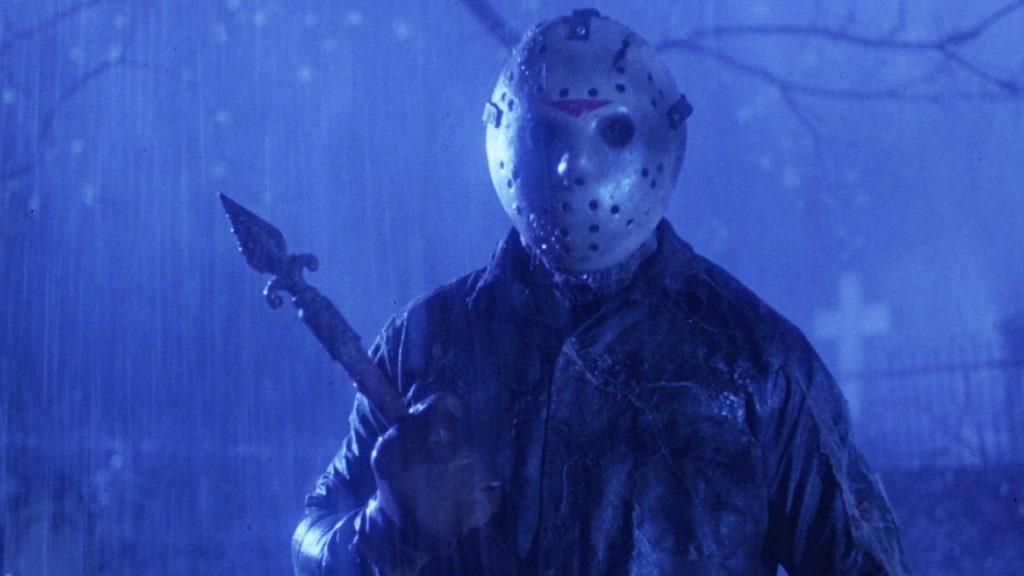
Supernatural Showdown: The New Blood (Part VII, 1988)
-
Portrayal: This time, Jason is pitted against a telekinetic teenager named Tina. Jason, still undead and scarred from the lake, is confronted in his own territory. He shows even more durability: Tina’s psychic blasts throw him around but don’t stop him. Jason wanders the old Crystal Lake lodge looking for victims while Tina unknowingly unearths and liberates him. By the finale, he’s a nearly unkillable horror.
-
Design & Appearance: The New Blood gives Jason his most gruesome look yet. Because he’d been underwater, makeup artist Anthony Doublin made him rotted: bare bone is visible under torn flesh, especially on one side of his face and chest. One eye is missing (killed off-screen by Tina’s mom’s psychic blast), replaced by a whitish blind eye. In dreams we briefly see a young Jason in tank top, foreshadowing the sensory psychic battle. Kane Hodder returns, and Buechler’s team used heavy latex to make Jason gaunt and ghastly.
-
Behavior & Weaponry: Jason systematically kills the counselors drawn to Crystal Lake (and some nuisances in the cabin). He wields his usual machete but also picks up any sharp instrument handy. A memorable moment: he throws Tina’s mother aside like she’s weightless. The telekinesis angle means Jason is buffeted by massive forces – he’s the first Jason to truly react to a protagonist’s power. In their final fight, Tina’s powers actually send him to Hell (literally), undercutting his invulnerability… temporarily.
-
Writers/Directors’ Intentions: John Carl Buechler – known for special effects – directed this entry. He insisted on casting Kane Hodder, and conceived the “living dead, decomposing” vision: “I wanted to create a whole new look for Jason; a torn up living dead ghost that inhabited a decomposing body. The make-up effects would ‘bulk him up’ a bit, and they would also allow for CHUNKS to be missing from his rotting frame.” The supernatural element (Tina’s telekinesis) was McGuffin meant to keep the series fresh. Buechler later explained they had to do something new by Part VII: “this was Part VII and we needed to do something to keep it interesting”. Thus the story consciously leaned into horror-sorcery.
-
Mythos/Backstory: The New Blood doesn’t clarify Jason’s origin but does “up the ante” on his myth. In novel tie-ins, Tina’s father Elias Voorhees is introduced as a villain (not in film). Within the film, we see supernatural forces at play (Jason’s chained return to hell). The implication is that Jason’s curse might be permanent.
-
Reception: Fans were divided. Some praised the bold direction and effects, enjoying the pulpy, Tarantino-esque vibe. Others scorned the far-fetched telekinesis and the fact that Tina can “kill” Jason. Critics largely found it campy. Still, Buechler’s The New Blood is often appreciated today for its creative approach.
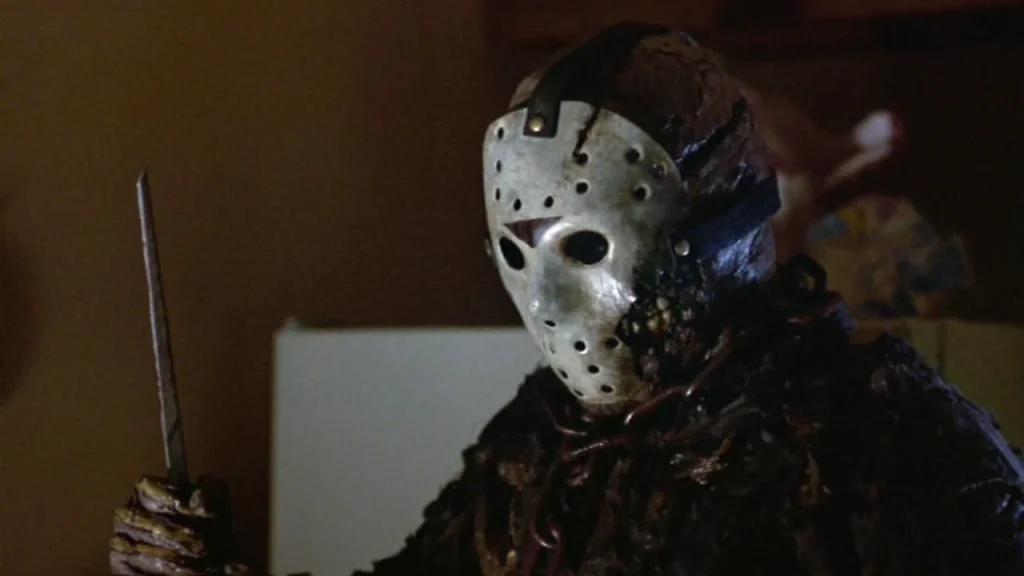
Big Apple Breakdown: Jason Takes Manhattan (Part VIII, 1989)
-
Portrayal: This film famously sends Jason to New York City. However, due to studio decisions, Jason spends most of the movie stuck on a cruise ship with delinquents en route to Manhattan. When the boat docks, Jason goes on a killing spree on the docks and subways. In NYC, he feels more like an urban predator chasing a stray cat than an apex predator – his kills in the city are fewer and often happen in poorly-lit streets or basements.
-
Design & Appearance: Jason is largely the same grim figure in 1989: hockey mask, battered shirt, ripped pants. A notable visual: at one point he tries to climb the Statue of Liberty’s arm (trailer material) – not in the final cut. In the climax, he wears a slick black leather jacket (after chilling in a haunted house museum, he magically puts on a Mabel mask and later a priest’s collar). The look remains much as before; the new setting is the novelty.
-
Behavior & Weaponry: Jason slashes and stabs – notably he uses an axe to slice through an office building door and impales a subway passenger with a spear. The NYC sets give him new props (asbestos box, scaffolding). For the first time, he fights multiple human opponents at once (sailors and racketeers use guns and brute force but to no avail). Jason still speaks only with violence; there’s a famous silent punch-out scene on the ship.
-
Writers/Directors’ Intentions: Director Rob Hedden wanted to globalize Jason. The push to NYC was partly for spectacle – and partly due to low inland box-office returns. Unfortunately, studio interference meant the film kept the boat-bound teenagers and only let Jason spend about 10 minutes actually in Manhattan. The result was a handful of disjointed set pieces rather than a deep dive into urban horror.
-
Mythos/Backstory: Practically none. There’s a hint that Jason’s curse might extend beyond New Jersey, but it’s not explored. The title is more of a pun: Jason takes Manhattan (packs it with fear) rather than going there fully.
-
Reception: Jason Takes Manhattan is often cited as the series’ nadir. Critics and fans panned its thin plot and limited city scenes. The gore is present, but the idea of NYC as character didn’t pay off. In horror lore, it’s remembered more for its poster (Jason looming over the Titanic) than for quality. Nevertheless, Kane Hodder’s performance and memorable kills (like a spear through a subway glass door) have kept it from being completely forgotten.
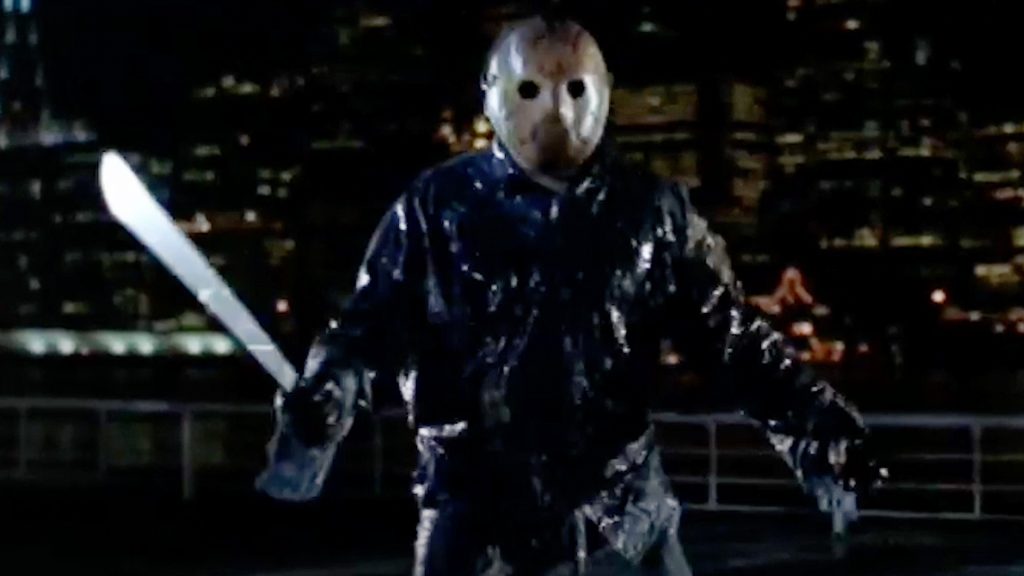
Hell’s Champion: Jason Goes to Hell: The Final Friday (1993)
-
Portrayal: This entry radically reinvents Jason. In the opening, he is shot and incinerated by the FBI – yet we soon discover Jason is a demonic entity that leaps from body to body (notably Creighton Duke, then Tommy’s niece Jessica). Jason’s usual hulking form appears only briefly; for most of the film, a gnarled, fleshy baby-faced heart is the talisman of his spirit. The Jason we know only reappears in the final act via the possessed body of Freddy Krueger – hinting at the upcoming crossover.
-
Design & Appearance: When Jason appears physically, he’s still in work boots and a red sweater, mask intact. But the film’s signature image is the face under the mask: a blackened, scarred flesh that is literally burning. This Jason is blood-drenched and sinewy. In Duke’s body we hear Jason’s guttural growl. During one scene, Jason’s severed hand (still twitching) crawls on its own – an iconic (if gross) quick moment.
-
Behavior & Weaponry: Without a stable form, Jason “kills” by his spirit: he can cause possessed people to kill others. The film also introduces a magical Druid dagger – only that blade, plunged into Jason’s heart, can truly trap him. Jason’s behavior is more mystical: he doesn’t simply chase teens, he hunts those in his bloodline (Pomson’s family). There’s a werewolf-like transformation when a character (Jacob) tries on Jason’s mask and goes berserk. Ultimately, Jason’s rage is played out through puppetry and gothic imagery rather than straight slasher action.
-
Writers/Directors’ Intentions: By 1993, horror sequels were supposed to end at five. Producer Sean S. Cunningham revived the series with Kevin Jarre’s story, wanting a dark mythology. The goal was to break out of the formula entirely – to make Jason more supernatural and “Hellish”. This odd vision (by Adam Marcus) directly set up the unresolved fight with Freddy. The film is also seen as an early attempt to tie franchises together, predating Freddy vs. Jason.
-
Mythos/Backstory: Jason Goes to Hell adds a huge new wrinkle: Jason is implied to be a “spawn of evil” or at least damned. We learn only his bloodline (the Voorhees family) can end him. The idea of Jason’s heart jumping to new hosts becomes part of his lore. The introduction of the Necronomicon (or at least demonic hint) broadens the universe. Crucially, the film ends by teasing Freddy’s return, cementing Jason’s place in a larger horror mythos.
-
Reception: Audiences were bewildered. Critics hated the convoluted plot and departure from slasher roots. Fans were split; some hate it as “the one where Jason isn’t really Jason,” while others champion its ambition and weirdness. In recent years, Jason Goes to Hell has gained a cult reappraisal, but it remains the franchise’s most divisive chapter.
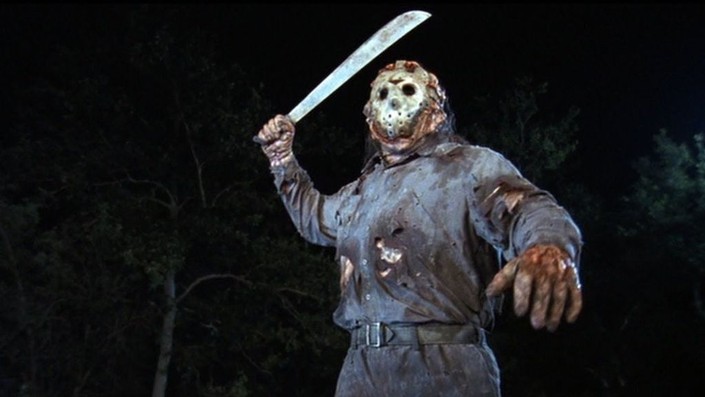
Space Jason: Jason X (2001)
-
Portrayal: In the far future, humanity has cryo-frozen Jason aboard a research ship. When he awakes in 2455, he adapts surprisingly quickly. Initially he’s the same unstoppable killer, slaughtering the crew of the starship Grendel. But soon he acquires futuristic upgrades: after a NASA scientist renovates his body, Jason regains mobility (removed anklet) and ultimately dons a high-tech silver mask and body armor. The final “Uber Jason” is half-man, half-machine – a gleaming cyborg with an energy weapon and gleaming metal faceplate.
-
Design & Appearance: Jason’s design in Jason X is ambitious. At first he’s in a straitjacket and lab gear, but soon he falls back into tatters. After his brief dormancy, he sports the classic hockey mask again (shiny plastic this time). The highlight is when alien nanobots give him a chrome armor suit; his mask becomes sculpted metal, and his eye glows red. Think Terminator meets Jason. The result is campy but visually bold.
-
Behavior & Weaponry: Jason wastes no time: he kills with makeshift and high-tech tools alike (trowels, ratchets, a spear, even slicing through robot voice boxes). He fights in zero-G, deadly on a deserted planet, and suffocates a survivor with outer-space vacuum. When “Uber Jason” emerges, he gains a rapid-fire energy claw and drives a massive circular saw. The space setting allows for creative kills – including the memorable jump-roping guillotine scene.
-
Writers/Directors’ Intentions: Writer Todd Farmer and director James Isaac were given a smaller budget but large creative leeway. The intent was pulp entertainment; the movie doesn’t take itself seriously. It was originally pitched as Terminator 12, but the studio insisted on Friday the 13th. The goal was to “do something different” with the character. Jason X was deliberately over-the-top and self-parodic.
-
Mythos/Backstory: This installment is essentially outside the main timeline. It doesn’t add to Jason’s origin (beyond showing Cryo in 2455). Its main contribution is demonstrating Jason’s curse could theoretically span centuries. In-universe, it suggests he could only be stopped (though he is defeated by the film’s end) by extreme measures.
-
Reception: Critics savaged Jason X as cheesy and derivative. Fans have had mixed reactions: some delight in its campiness and outlandish premise, others deride it as franchise burnout. Over time it’s become a cult favorite for midnight screenings – perhaps because it fully embraces the silliness.
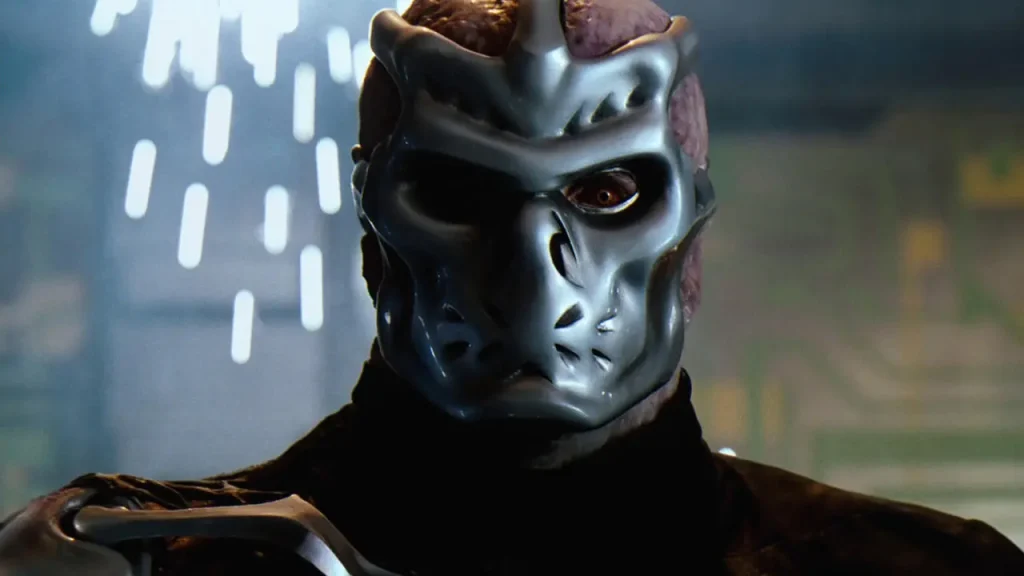
The Inevitable Showdown: Freddy vs. Jason (2003)
-
Portrayal: After being trapped, Jason is revived to terrorize Springwood again – this time as a pawn of Freddy Krueger. Jason is himself fairly intact (near-ultimate version of his mask and machete). Initially, he’s been hiding near Elm Street, his presence causing nightmares and giving Freddy power. When the two finally clash, Jason is all brute force: he can physically overpower Freddy at times, despite Freddy’s dream magic.
-
Design & Appearance: Jason’s look is a polished throwback: he has the classic mask (slightly worn) and the signature red flannel shirt and jeans. There’s no gimmicky alteration. He’s simply a 300-pound silent killer with a rubber head and an army of attackers in the streets of Springwood. Occasionally he gains minor burns from fire (Freddy’s weapon) but otherwise he looks as fans expect.
-
Behavior & Weaponry: Jason hunts teens by knife and machete as usual. Freddy’s plan is for Jason to kill so that the town will worship Freddy’s name in fear. At first Jason is weaponized by Freddy (through dreams), but as the film goes on, he operates on his own. He uses a variety of weapons — ultimately even fighting Freddy bare-handed. Jason’s murders here are graphic (face stabbing, impalement with a horse bit, slow choking) – a return to violence that slasher fans craved.
-
Writers/Directors’ Intentions: After decades of fan demand, producer Sean S. Cunningham finally secured the crossover rights (with New Line). Damian Shannon and Mark Swift wrote a script that took neither side seriously. Director Ronny Yu amplified the gore (he saw it as a “grindhouse” action). The concept was pure fan service: deciding who is the better killer and who wins when they fight. The title says it all.
-
Mythos/Backstory: The film largely ignores past continuity – it doesn’t explain how Freddy and Jason cross into each other’s domains, beyond Freddy using Kristen’s curse. No new lore is really added to Jason’s backstory. Instead, it’s a what-if funhouse: both characters revert to basics. In a meta sense, it elevates both icons by treating them as living legends who can collide across realities.
-
Reception: Freddy vs. Jason was a box-office success and a fan rallying point. It drew crowds excited to see the slasher titans together. Critics gave a shrug (some said it delivered what it promised). Fans were divided – some relish the showdown and its bloody fight scenes, others feel the script lacked depth. Nevertheless, it cemented Jason’s place alongside Freddy and Michael Myers in the pantheon, showing he could hold his own against other horror stars.
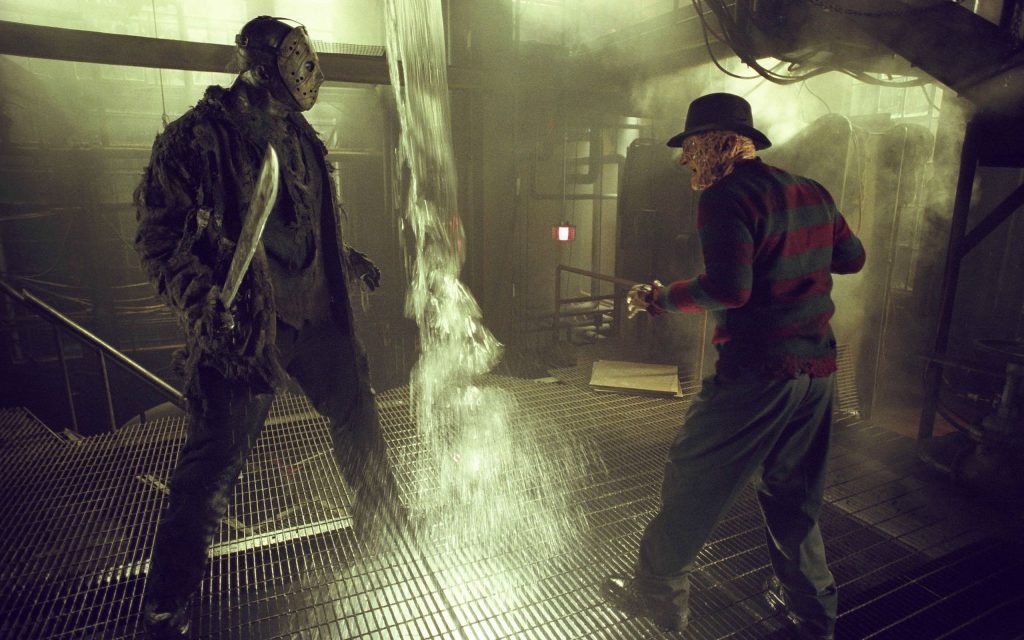
Rebooted Terror: Friday the 13th (2009)
-
Portrayal: The 2009 film reimagines Jason as an ever-present threat, effectively combining Parts 2 and 3 origins. He starts the film as a child drowning (like the original), but almost immediately we jump to adulthood. In dreams and memories, Jason appears with his raw, unmasked face. By the end, a fearsome adult Jason (David Henrie as Jason, Kan Hodder stunt) confronts the survivors. The movie suggests the adult Jason has been the killer all along.
-
Design & Appearance: Director Marcus Nispel intended a gritty, “documentary” style. Young Jason wears play clothes; the adult Jason wears his classic ripped tee and a brand-new hockey mask (shiny white in the final scene). His make-up is an aggressive hydrocephalic deformation – CGI augments Kan’s face to be almost skull-like. After multiple kills, his final reveal shows a mouth full of jagged, sharpened teeth – a new terrifying detail.
-
Behavior & Weaponry: This Jason is vicious from the first kill. He picks off gang members, lovers, and party-goers with merciless efficiency. His weaponry is wide-ranging: a sharpened broomstick, machetes, even a chain – he improvises. Crucially, the whole film plays like a traditional slasher: a group breaks into “Jason’s” territory and are massacred one by one. In the climactic scene, Jason viciously fights the final girl, echoing Part 2’s ending (including the iconic sweater ploy), before being struck with police gunfire.
-
Writers/Directors’ Intentions: Produced by Michael Bay’s Platinum Dunes, this was meant to relaunch the franchise. Marcus Nispel and writers Damian Shannon/Mark Swift fused elements of the first three films. They aimed for a darker, R-rated tone than PG-13 Hollywood norms. The twist here is that the adult Jason was responsible for all kills – a revenge fantasy that Jason survived after Pamela was captured. They also flipped the Part 2 role of Ginny/Ginny’s disguise to a final girl who nearly kills Jason.
-
Mythos/Backstory: The reboot retells Jason’s origin in one film: drowning, then vengeance as adult. It doesn’t add new lore so much as retcon the original mythology. The implication is simply, “this is how it really went down.” It removes Roy Burns, Tommy, and supernatural elements – giving a single-slayer narrative. In effect, it resets the mythos to a primal mother-son vengeance story.
-
Reception: Fans clamored for a new Jason movie, but reaction was mixed. Some enjoyed the brutality (it is bloody and fast-paced) and the new crunchy effects. Others missed the franchise’s quirkiness and the mask’s “magic” (here it’s just an accessory). Critics panned it as generic. Overall, it has a divided legacy: appreciated by some for returning to horror roots, but criticized by purists for glossing over long-running continuity.
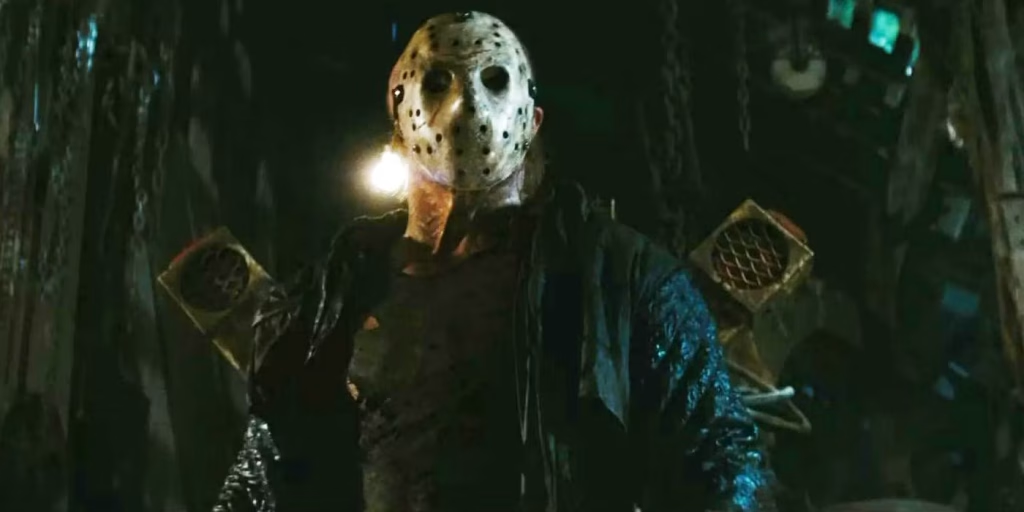
Beyond the Big Screen: Expanded Jason Universe
Jason Voorhees quickly jumped out of the film series into other media, becoming a horror brand unto himself. Novels and comic books expanded his myth. For example, Simon Hawke’s novelization of Jason Lives introduced Elias Voorhees – Jason’s father – fleshing out the Voorhees family tree. (Elias later appeared in comics.) Comics have sent Jason on wild adventures: crossovers have him facing Leatherface (Jason vs. Leatherface, Topps Comics 1995), Ash Williams (Jason vs. Evil Dead, Avatar Press), and even multiple versions of himself (Jason vs. Jason X). There’s a Freddy vs. Jason vs. Ash comic too (based on Kevin Smith’s unused script). These stories are non-canonical epics, but they kept Jason in print and pop culture.
Jason also stalked the gaming world. The most notable example is Friday the 13th: The Game (2017) by IllFonic/Gun Media. This popular multiplayer horror title let players be Jason – stalking campsites and hunting human players – or be camp counselors trying to survive. Fans loved that the game faithfully included multiple Jason skins: “Want to play as bag-head Jason from Part 2? No problem! How about a version of Jason designed by Tom Savini?” Fangoria raved that Friday the 13th: The Game was a “deceptively simple but endlessly entertaining” homage to the films. Unfortunately, Jason’s reappearance in games hit a snag: the license fight between Sean Cunningham and Victor Miller eventually led to the game’s servers shutting down in 2024 (as Fangoria notes, the rights battle caused development to halt). Even so, the game’s success shows how Jason thrived outside cinema.
Across books, comics, and games, Jason’s lore grew in myriad ways. There are dozens of novels (Tie-in novels by Brian Fox and Jeffrey L. Godlberg, as well as original novels) and short stories exploring Crystal Lake. Boards games, action figures, and a Friday the 13th television series (about cursed objects, not Jason himself) all expanded the brand. Though not all of this media is “official” canon, it underscores Jason’s broad cultural footprint.
Battling Backlash: Censorship, Controversy, and Copyright Wars
The Friday franchise has never been without controversy. In the 1980s and ’90s, the films’ gore and violence drew censorship. Though none of the Friday movies were officially “video nasties” in the UK (they eventually passed uncut or with minor trims), cuts were common to avoid X/NC-17 ratings. For example, Part VII: The New Blood had numerous gruesome kills trimmed so it could be rated R in the U.S. (effects artist John Carl Buechler later commented on the battles over that film’s gore). In general, each sequel pressed MPAA and other rating boards harder, resulting in edits for TV airings or certain video releases. Fans often sought unrated director’s cuts on DVD. Censorship controversies simmered (especially in Germany and Britain), but by the 2000s the series had largely shrugged them off with up-front R-ratings and modern gore standards.
A far more serious saga has been the rights and ownership of Jason and the Friday the 13th name. In 2016, original screenwriter Victor Miller exercised his termination rights under copyright law, seeking to reclaim his 1979 screenplay. Horror Inc. (the production company) sued to stop him, arguing Miller was an employee (work-for-hire). In 2018 a district court sided with Miller, and in 2023 the 2nd Circuit Court of Appeals affirmed Miller was an independent contractor and got his rights back. This landmark ruling essentially split ownership: Miller now owns the 1980 film’s original screenplay (and Jason as depicted there), while other producers (Paramount/New Line) control later films. As Fangoria reported, the result was a “messy legal battle” that has locked up the franchise. It’s why, to this day, no new official Friday movie has moved forward.
Meanwhile, other disputes arose over merchandising, sequel rights, and even music (Alice Cooper’s song rights). Jason and Friday the 13th became a cautionary tale of how multiple creators and contracts can tangle. The good news is that Miller’s legal victory means the original story (and the character’s core rights) may eventually enter the public domain or allow new filmmakers to approach it fresh. But for now, fans must wait out the legal limbo.
Jason’s Legacy: The Silent Killer’s Cultural Impact
Forty-plus years after his debut, Jason Voorhees is ensconced as one of horror’s Big Three – alongside Michael Myers and Freddy Krueger. His image (especially the hockey mask and machete) is immediately recognizable worldwide. As Friday the 13th franchise lore notes, “Jason’s hockey mask has become one of the most recognizable images in horror and popular culture.” It adorns T-shirts, Halloween costumes, and even sports paraphernalia. His name evokes summer slasher chills: camps, cabins, and curses.
How does Jason compare to his peers? Unlike Michael Myers (the silent evil of Halloween) or Leatherface (the chainsaw butcher of Texas Chain Saw Massacre), Jason is almost uniquely silent – he never speaks and rarely even shows facial expression. Yet this blankness makes him all the more terrifying. He’s also unlike Freddy Krueger: whereas Freddy taunts victims with wit and lives in dreams, Jason is all action and no talk, striking fear in the waking world. Directors over the years have deliberately kept Jason mute to preserve his primal mystique.
Jason’s enduring appeal lies in his inescapability and roots. He is, at heart, a tabula rasa projection of primal terror. Viewers might see him as vengeance incarnate – punishing those whose actions mirror the camp counselors’ negligence – or as pure evil. Importantly, some interpretations even empathize with him: by Part VI and beyond he’s framed as a wronged soul returned from the grave. The official franchise notes that Jason’s motive is often “rage over having drowned as a child” – a simple yet tragic origin that resonates as a warped cautionary tale.
In terms of influence, Jason paved the way for countless slashers. His city-versus-nature battles, his supernatural resurrections, and his pop-culture crossovers all trace back to this character. Writer-director John Carl Buechler (on The New Blood) even remarked that by the time the series hit the seventh film, Friday the 13th had “set a new ‘production value benchmark’” and would forever be a franchise – a staple like Frankenstein or Dracula. He observed, “Any time you make more than three pictures, it’s not just a series, it’s a franchise.”That franchise status has held true: Friday the 13th remains one of America’s most successful horror series.
Today, Jason’s legacy is visible everywhere. He headlines horror conventions, cameoing in merchandise and media. His mask appears in TV cartoons (from South Park to The Simpsons), video games (Dead by Daylight has a Jason character), and even music (youtubers like Corpse Husband reference him). Comparisons are routine: fans debate whether Jason’s raw might would win in a fight with Myers’ stealth or Freddy’s mind games. In the end, his place is secure simply because he is Jason – the silent, unstoppable embodiment of the slasher genre.
As Buechler put it years ago, the Friday series will “always be remembered as a classic horror film series”. Jason Voorhees stands as a testament to that – a mythic bogeyman spawned by a girl’s grief, who has become as enduring as any folkloric villain. His saga from drowned boy to hockey-masked juggernaut is bizarre and often ridiculous, yet it has captured imaginations worldwide. Whether feared as the vengeful son or celebrated as a cult icon, Jason’s impact on horror is undeniable. In the pantheon of slashers, with machete raised high, Jason Voorhees remains reigning terror – his mask a symbol of the monstrous and the legendary.
🔪 The Friday the 13th Retrospective Series
A look back at every machete swipe, scream, and sequel in the Friday the 13th franchise:
-
Friday the 13th (1980) – https://pochepictures.com/friday-the-13th-1980-the-one-that-started-it-all/
-
Friday the 13th Part 2 (1981) – https://pochepictures.com/friday-the-13th-part-2-1981-the-birth-of-jason-the-middle-child-of-the-franchise/
-
Friday the 13th Part III (1982) – https://pochepictures.com/friday-the-13th-part-iii-1982-mask-on-shirt-off-and-body-count-rising/
-
Friday the 13th: The Final Chapter (1984) – https://pochepictures.com/friday-the-13th-the-final-chapter-1984-the-best-lit-death-march-yet/
-
Friday the 13th Part V: A New Beginning (1985) – https://pochepictures.com/friday-the-13th-part-v-a-new-beginning-1985/
-
Friday the 13th Part VI: Jason Lives (1986) – https://pochepictures.com/friday-the-13th-part-vi-jason-lives-1986/
-
Friday the 13th Part VII: The New Blood (1988) – https://pochepictures.com/friday-the-13th-part-vii-the-new-blood-1988/
-
Friday the 13th Part VIII: Jason Takes Manhattan (1989) – https://pochepictures.com/friday-the-13th-part-viii-jason-takes-manhattan-1989/
-
Jason Goes to Hell: The Final Friday (1993) – https://pochepictures.com/jason-goes-to-hell-1993-the-body-hopping-butcher-and-the-death-of-a-slasher/
-
Jason X (2001) – https://pochepictures.com/jason-x-2001-a-space-odyssey-of-slashes-and-silliness/
-
Freddy vs. Jason (2003) – https://pochepictures.com/freddy-vs-jason-2003-when-nightmares-meet-crystal-lake/
-
Friday the 13th (2009) – https://pochepictures.com/friday-the-13th-2009-the-brutal-reboot-that-forgot-the-soul/

